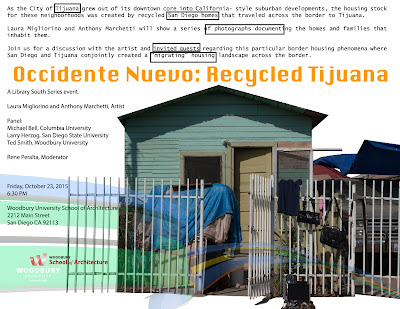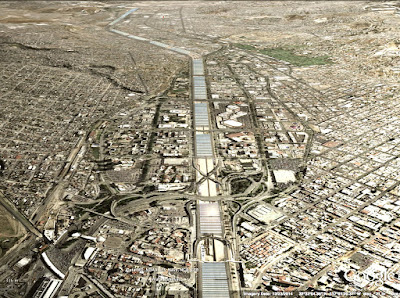Category: Uncategorized
This blog is back with my latest text on PREVI in Peru
This essay was written for the online magazine ACTA. Click here
Experimental Housing Project (PREVI) Lima, Peru, 1968 from BLAS HERRERA on Vimeo.
The Third Way
By Rene Peralta
Can we define community, as only a group of people who live in a particular place? Or can we consider that within a community there exists a network of actors who participate in the economic sustainability of a place. Therefore we might say that a community is a place/space where social relations between different actors are formed. And our cities are interrelated group of communities working together to produce a more equitable, just, and sustainable, (in all its meanings) place to co-inhabit.
As geographer David Harvey explains, we all have a right to the city:
“ The question of what kind of city we want cannot be divorced from that of what kind of social ties, relationship to nature, lifestyle, technologies and aesthetic values we desire. The right to the city is far more than the individual liberty to access urban resources: it is a right to change ourselves by changing the city”
This past Wednesday June 03 the New Barrio Logan Community Plan was defeated in the polls, an election portrayed as a battle between community and industry. The essential conclusion of the plan was to rezone the area and create a buffer zone between industry and residents as well as a to restrict new industrial spaces within the community. The most important argument for some resident and environmental groups was a demand to protect the integrity of the health of the community. Currently this area one of the top 5% polluted areas in the State of California and within the City of San Diego it has the highest emergency room visits due to respiratory problems, most of them asthma attacks.
Barrio Logan is also home to industries that are vital to San Diego’s economy. According to the National University System Institute for Policy Research this community is an Industry Oriented District with approximately 200 industries and has 7,750 employees, 11,200 indirect and induced jobs and annually producing 1.05 billion dollars in sales. Unfortunately, these industries produce high greenhouse gas emissions that prevent the community from being desirable place to live.
Not only is the community not a healthy desirable environment to live in, it also has a significant low income population, the median income in “The Barrio” is $25,044 compared to the $69,165 in the rest of San Diego County. Only 15% of Barrio Logan citizens own a home.
If we redefine the conflict between residents and industry as challenges and community assets, rather than problems, we will find that Barrio Logan and Logan Heights are communities well served by public transportation with a possibility of becoming strong TOD, (Transit Oriented Developments). It can take advantage of a strong giving industrial economy, environmental effective recycling centers and future educational/trade training centers. Future plans need to foster strategic collaborations for increasing educational opportunities by creating an alliance with the local industry as well as identifying areas for the development of TODs. These challenges need to be interpreted as assets, because there is a possibility for them to work as a network of actions that can lower GHG emissions within the community and beyond.
Future community plans must favor the participation of industry in the redevelopment of the community. There are already state initiatives that could allow for certain protocols to be put in place and begin a best practices approach to GHG emission and pollution from industrial activities. Local industries that pollute can redirect their funds from state funds to specific community efforts to reduce co2 emissions. In Barrio Logan, over 40% of the population is between 18 and 24 years of age in need for jobs and training in the many technical trades needed by local industries of the community. Local businesses can become partners in training the work force of tomorrow right in Barrio Logan. All types of industry need to adhere to better sustainable operational practices and consider creating job-training centers within the community. Transit Oriented Developments are also part of California’s budget and focused to serve disadvantaged communities such as Barrio Logan, where most of the housing stock is single-family detached residences, a situation that inhibits the building of affordable, dense and mix-use housing for the working class. In the educational realm there are already steps being taken by public and private institutions to expand educational opportunities in the near future, such as the non-profit Los Angeles based Woodbury University that already has been in the community for six years offering accredited undergraduate degrees in architecture. Finally, local businesses like recycling centers need to find a way to “green” themselves and stop the polluted runoff with imaginative design schemes of their existing facilities.
The potential exists and the economic incentives are available to assist industry in becoming a partner for a healthy community in Barrio Logan. Innovative ecological design opportunities and technology is there to accomplish it. This approach can transfer development efforts from the grip of a few privileged groups and implement a democratic process, producing opportunities for a struggling and neglected community. We need to counter attack displacement and gentrification of one of San Diego’s most diverse and culturally rich communities with the opportunity to create equity and promote better educational prospects. The urban crisis in Barrio Logan should be a concern to all San Diegans including private industries and foster collaborative alliances between all actors of the community.
Rene Peralta is Director of the Landscape+Urbanism Graduate Program at Woodbury University, San Diego, a non profit academic institution located in the heart of Barrio Logan. He is also an Instructor in the UCSD Urban Studies Program
Images by Arturo Tovar, graduate student in Landscape+Urbanism from Woodbury University, San Diego.
Reportaje Especial: Valle de las Palmas, una Ciudad Fantasma | stmedia
haz click al link para ver el reportaje
 |
| foto: sintesis.tv |
Una de las ideas que aquí comparto y que han trabajado con los alumnos de la Maestría en Urbanismo+Paisaje de Woodbury University, San Diego es repensar este lugar en un valle de tecnología binacional, donde se le de énfasis a la educación incluyendo mas universidades y a la integración empresas locales y foráneas de tecnología y fabricación. Lo único que mantiene a esta zona con poca vitalidad es la UABC, universidad que puede ser el ancla que inicie la transformación de la zona. Para poder re-habitar las viviendas se necesitaría ofrecer a venta o crédito a los trabajadores, alumnos y profesores de lo que pudiese ser un centro tecnológico importante para el futuro de Tijuana. Sabemos que la maquila seguirá siendo la industria mas importante en Tijuana y se necesita invertir en mejorar la calidad y educación de la mano de obra como también crear una generación de creadores locales. Se pueden diseñar nuevos modelos de parques industriales que no solo sean centros de empleo de mano de obra barata, pero que también generen nuevas tecnologías en los ramos de la medicina, electrónica e industria aeroespacial. Y es aquí y ahora cuando se puede tomar este fracaso de ciudad sustentable y crear el “silicon valley” fronterizo sin destruir uno de los paisajes mas bellos de Baja California.
This Spring semester in the Woodbury University’s Landscape + Urbanism Graduate Studio we worked on documenting the effects of industrial regions, free trade zones and smart cities across the globe (from Silicon Valley, Tijuana/San Diego, Sungdo and Panama). How can the post-industrial define itself today, as many regions and cities rely heavily on industrial production and work as their primary economy, such as Tijuana. We later worked on the difficult project of designing new industrial zones in two area of the city, using spatial mapping to understand if adjacency to markets and/or labor were the most appropriate way to localize different industries. Then we ran the script on these two sites trying to integrate education, affordable housing, and natural remediation technologies – the indifference to these factors by the industry has been the stigma of the “maquiladora” ecologies since they hit the ground in 1965.
























